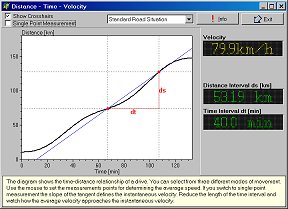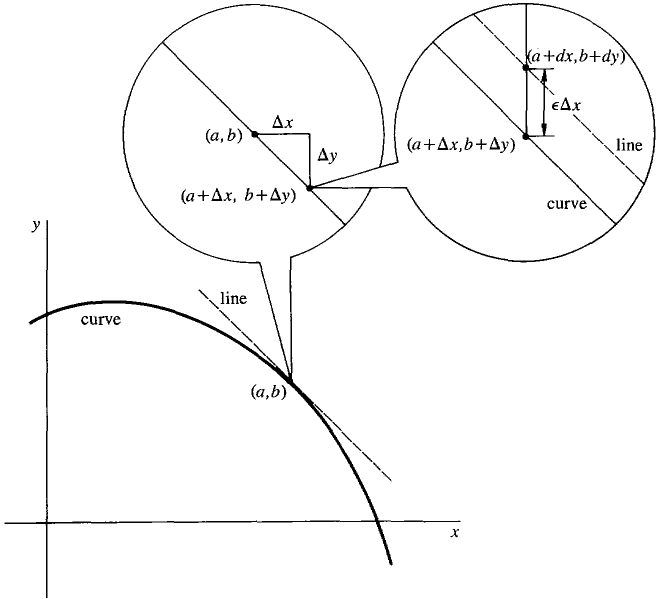| The ebook Elementary Calculus is based on material originally written by H.J. Keisler. For more information please read the copyright pages. |

|

Home  Differentiation Differentiation  Differentials and Tangent Lines Differentials and Tangent Lines  Definition of Differentials Definition of Differentials |
||||






|
||||
Definition of Differentials
DEFINITION Suppose y depends on x, y = f(x).
When dx ≠ 0, the equation above may be rewritten as
Compare this equation with
The quotient dy/dx is a very convenient alternative symbol for the derivative f'(x). In fact we shall write the derivative in the form dy/dx most of the time. The differential dy depends on two independent variables x and dx. In functional notation, dy = df(x, dx) where df is the real function of two variables defined by df(x,dx) = f'(x)dx. When dx is substituted for Δx and dy for f'(x) dx, the Increment Theorem takes the short form Δy = dy + ε dx.
The Increment Theorem can be explained graphically using an infinitesimal microscope. Under an infinitesimal microscope, a line of length Δx is magnified to a line of unit length, but a line of length ε Δx is only magnified to an infinitesimal length ε. Thus the Increment Theorem shows that when f'(x) exists:
Figure 2.2.3 is not really accurate. The curvature had to be exaggerated in order to distinguish the curve and tangent line under the microscope. To give an accurate picture, we need a more complicated figure like Figure 2.2.4, which has a second infinitesimal microscope trained on the point (a + Δx, b + Δy) in the field of view of the original microscope. This second microscope magnifies ε dx to a unit length and magnifies Δx to an infinite length.
Figure 2.2.4
|
||||
Home  Differentiation Differentiation  Differentials and Tangent Lines Differentials and Tangent Lines  Definition of Differentials Definition of Differentials |
||||
Last Update: 2010-11-25





